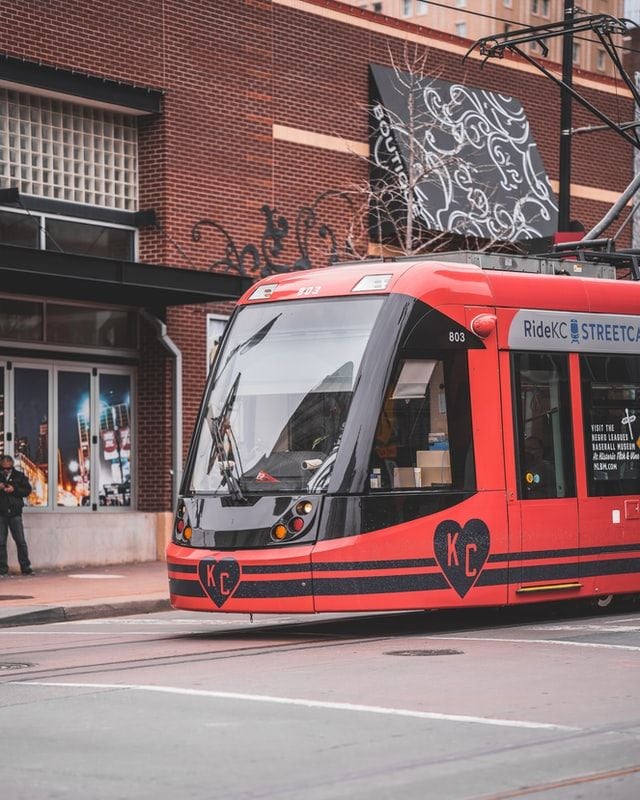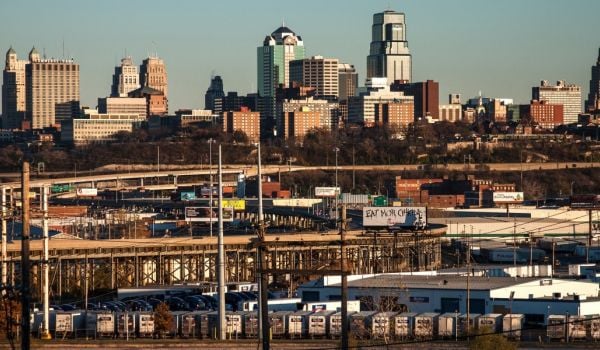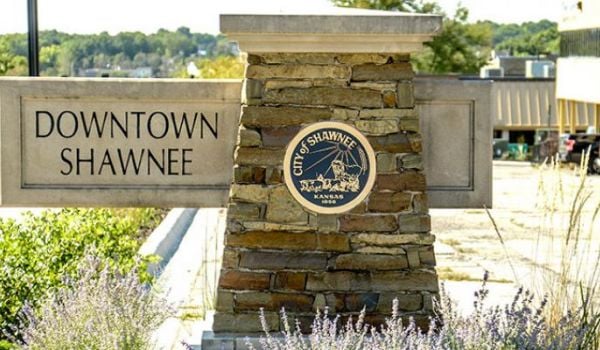Kansas City, Missouri, made national headlines in the fall of 2019 when its city council voted unanimously to become America’s first large city to make public transportation free citywide. Now, two and a half years later, anyone living anywhere in the city can ride buses without paying a fare.
How has that worked out for the riders and the city?
Survey data shows the move has largely been successful in advancing local transit equity – though it also highlights what remains to be done to allow all Kansas Citians equal access to the sprawling metropolitan area.
A study conducted as part of the Urban League of Greater Kansas City’s annual “State of Black Kansas City” report last year asked 1,686 riders for their feedback on what Zero Fare has enabled them to do. The responses show how a Zero Fare policy makes a big difference in these riders’ ability to exercise the so-called “right to the city.”
Almost 90% of the riders surveyed said they rode the buses more as a result of Zero Fare. About 92% said it allowed them to shop for food more often; 88% said they could see their healthcare providers more easily or more often; 82% said it allowed them to get or keep a job; and 86% said it made them feel like city leadership is concerned about their needs — a sore subject for mostly-Black East Side residents, who often complain that the city pays more attention to its whiter and more affluent west side.
Ben Knight is one of those people who now eats better thanks to Zero Fare. And, he says, he enjoys life a little more because he can actually afford to spend money in favorite places like downtown Kansas City and the dining and entertainment district of Waldo.
Knight lives in Overland Park, the largest of Kansas City’s suburbs and the largest city in Johnson County, Kansas. After the COVID pandemic began, the county also decided to eliminate fares on buses within it.

(Photo by Brock Wegner / Unsplash)
Knight, a student at Johnson County Community College, says that he saves $600 a year by not having to buy transit passes to go to classes or his favorite hangouts. So what does he do with the $600? “I’m able to buy things and help support the household,” he says. “That’s $600 free that I can take my girlfriend out or go grocery shopping. I can loosen the reins a bit on spending, not by much, but by enough so that we can treat ourselves a little more than we used to.”
And like the 84% of Kansas City transit users who said Zero Fare lets them go to places they’ve never been before, Knight says he has been able to explore places he couldn’t have afforded to visit when he was paying to ride the buses.
Besides the increased mobility and financial benefits, nearly 80% of the residents surveyed also said Zero Fare increased their sense of safety on the bus. That points to one of the more counterintuitive benefits of eliminating fares: The buses became safer to ride.
“Some operators would beg to differ with us, and some operators feel like it doesn’t seem right that people are riding longer than they would if they actually had a destination,” says Cindy Baker, interim vice president for marketing and communications at the Kansas City Area Transportation Authority (KCATA). “But statistics show that actual incidents where supervisors have to be called [to quell a disturbance on a bus] have actually gone down.” Many of those incidents concerned passengers who either could not afford to or refused to pay fares.
Indeed, the total number of incidents where supervisors were called fell 39% in the first year of full Zero Fare transit, according to a 2021 Zero Fare impact analysis by the Mid-America Regional Council (MARC), the Kansas City area’s metropolitan planning organization. Incidents per 100,000 riders fell 17%.
Kansas City’s experience with fare-free transit stretches back to 2016, when the Kansas City Streetcar Authority’s starter line opened for business between the River Market and Union Station downtown. Paid for by a sales tax surcharge in the district it served, the streetcar has been free — and popular — from its launch: The line, whose builders projected it would carry 2,700 passengers per day on average, carried double that amount in its first eight months of operation. Up until the COVID pandemic hit, the streetcar carried more than 2 million passengers each year.
That millions of riders rode without major incident paved the way for the steps that followed. The KCATA allowed veterans to ride for free starting in 2017, a program that was extended to students the following year. Then, around the time the city council took that groundbreaking vote, the city’s third bus rapid transit route, Prospect MAX — the first to operate on its East Side — launched service with a 90-day free promotional period.
At the end of the period in February, KCATA officials announced that the line would remain free from then on. The final step was accelerated the following month, thanks to the pandemic.
“We were prepared to go full-blown when COVID hit,” Baker says. “So we just pushed it forward a bit.”
The full implementation of Zero Fare helped buoy ridership on the KCATA during the pandemic. According to a MARC study, KCATA bus ridership fell to 58% of 2019 levels by May of 2020. But it recovered to 80% by October of that year. That’s compared to a nationwide average of just 40%.
Figures reported to the American Public Transportation Association show that KCATA annual bus ridership dropped 25-26% from its 2019 ridership levels over the past two years. But those figures are still better than its peer agencies’: In St. Louis, the agency which operates St. Louis Metro Transit lost nearly 39% of its bus trips in 2020, plus an additional 15.5% the following year.
Clearly, then, Zero Fare has given KC’s bus system a ridership boost. And that increased ridership also carries environmental benefits. MARC’s transportation demand models suggest increased ridership due to Zero Fare could eliminate 7,000 tons of carbon dioxide emission from the air, or 0.2% of all regional transportation sector emissions.
Nonetheless, transit authorities say, work remains to be done.
First up: securing a continued source for funding to support Zero Fare. It costs the city treasury anywhere from $8-10 million annually to cover the cost of foregone fares. The elimination of fare collection costs covers some of this shortfall, but there is still no stable source of money to cover the rest. Federal pandemic relief has been picking up the tab so far, but that will soon run out. What then?
The KCATA will use a $500,000 grant the Federal Transit Administration awarded it in June to study potential answers to that question. One possibility: Ask the voters to pay a little more at the cash register. Two sales taxes currently fund KCATA capital programs and operations: a half-cent sales tax authorized by the Missouri legislature in 1971, and a three-eighths-cent tax approved by city voters in 2003. (Those funds are already under threat. A transit advocacy group in 2016 accused the city of continually shortchanging the KCATA by using sales tax money for other purposes, and The Kansas City Star reported this month that the city is attempting to divert $22 million of transit sales tax revenue for other projects.)
While fare-free transit improves the ability of such riders to get around, long waits for buses still hobble ridership. A recent series of articles in The Star examining the quality of bus service in the area found the infrequent service to be a major concern. Their analysis showed that 41 of KCATA’s 56 regular bus routes operate at frequencies of once an hour or even longer. Only one — Prospect MAX — operates at 15-minute frequencies. Service cuts during the pandemic truncated some routes, eliminated others and further reduced frequencies on still others.
Knight can attest to the importance of frequent, reliable bus service. A lifelong bike and bus rider, he found himself either having to bike home at night or just not taking trips to some places because the bus route nearest his home only operated during part of the day.
“I’m going to be riding the bus more because [the county] just moved the route that runs past my house to all-day, so I can actually take it more,” he says. “I will be able to work while riding the bus instead of having to take the bike everywhere.”
Kansas City is just one of scores of jurisdictions in the KCATA’s two-state, seven-county service territory. Zero Fare only applies on routes that originate or terminate within the city. On top of that, some of the counties – Johnson County in particular – have discussed replacing fixed-route bus service with microtransit.
All this means the question of how far Zero Fare goes to strengthen transit equity and mobility remains an open one. But the numbers show Kansas City has at least taken a serious step forward.
This story has been edited to correct Cindy Baker’s last name. We apologize for the error.

Next City contributor Sandy Smith is the home and real estate editor at Philadelphia magazine. Over the years, his work has appeared in Hidden City Philadelphia, the Philadelphia Inquirer and other local and regional publications. His interest in cities stretches back to his youth in Kansas City, and his career in journalism and media relations extends back that far as well.
Follow Sandy .(JavaScript must be enabled to view this email address)
















